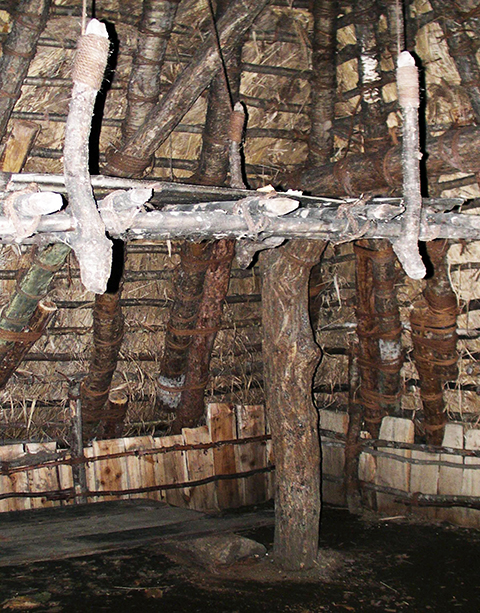
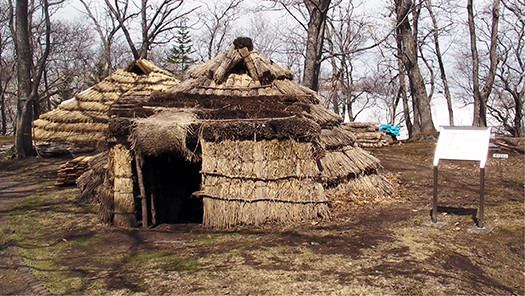
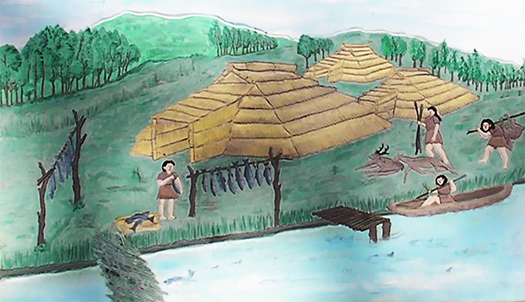
さて、全国各地の住宅探訪をライフワークのように続けてきて、一方でそういった取材の「整理整頓」が生来の怠け者のせいでまったく進んでおりません(泣)。せっかく高断熱高気密などの現代的住宅進化のただ中で住宅取材を続けて来られた人間なのに、その責任をしっかり果たしていないなと深く反省してきております。
そういうことで徐々にそういった「振り返り」をして、罪滅ぼしに着手していきたいと思います。そういう活動についてはこのブログに限らず、いろいろな発表機会を活用してまとめていきたいと念願しています。わたしは住宅の取材者・ジャーナリストなので、一応の建築知識自体はあるけれど、より生活レベルでの視点、住んでいた人間側の目線での気付きを心がけて行きたいと思っています。
ということで飛び飛びになると思いますが、今回は「ところ遺跡の森」探訪の再発見編です。前にも一度ブログで触れていましたが、やはりしっかり周辺取材とか、現地研究施設での研究成果などを交えての「深掘り」には到底至っていなかった。そういうケースが山ほどありすぎるのですね。住宅取材版「フーテンの寅さん」か(笑)。こちらについては2009年に探訪してきています。全国のみなさんのために「常呂」の位置関係を。
ところ遺跡の森はカシワ・ナラを主とした落葉広葉樹の森林で総面積は12万㎡ほど。地図の通り、オホーツク海に面したサロマ湖の接点にあたる丘陵に約4,000年前ころからの竪穴住居群が約138軒。住居の立地はそれぞれ、1000年前頃の「擦文期」には台地の西側・小沢周辺にに分布、約1800年前頃の「続縄文期」には、台地の北側に分布。いちばん古層の4000年前の縄文期では台地の北側から東側に掛けて広く分布している。ひとつの遺跡地域でそれぞれの時代の住居立地が異なっていることは珍しいとのこと。
上の写真・イラストはもっとも最近の「擦文期」のもの。本州地域では平安・鎌倉期にほぼ相当するのですが、遺跡全体で48軒の住居跡が確認されている。この時期には竪穴住居3軒程度でムラが構成されて成立していた。人びとの生業としては、主に川瀬で魚をとる仕掛けの一つ「簗〜やな」で、木・竹を並べて水を一か所に流すようにし、そこに来る魚を、斜めに張った簀(す)などに受けて捕らえるサケマス漁が行われていた。
イラスト表現では、シカの捕獲も図示されている。主体は狩猟採集だったのでしょう。しかし、アワ・ソバ・ヒエなどの「農耕」も行われていた。このあと、北海道島は「アイヌ文化期」を迎えるけれど、本州地域とははるかに遠隔地だけれど、こういったニッポン列島の風景も同時期に存在していた。
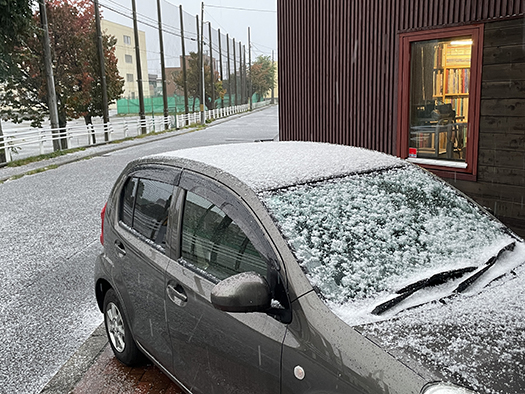
・・・と書いていてふと物音がしたと思ったら、なんと札幌、初雪であります。いにしえの人々も、初雪にはどんな心象を抱いたでしょうか。やっぱり一抹のさみしさと、なつかしさなのかなぁ。
English version⬇
Hokkaido’s Ruins: A Second Look at an Old Japanese House – Tokoro Ruins
The first snow was observed at our house in Sapporo today. The houses and people who lived in Tokoro, Hokkaido more than 1,000 years ago. We will explore and excavate with the power of empathy for the climate and climate of the region. The house and people who lived there more than 1,000 years ago in Tsuneo, Hokkaido, Japan.
I have been continuing my life’s work of exploring houses all over Japan, but on the other hand, due to my natural laziness, I have not been able to “organize” my coverage at all (I cry). (Crying) Although I have been able to continue to cover housing in the midst of the evolution of modern housing, such as highly insulated and airtight houses, I have been deeply reflecting on the fact that I have not been fulfilling my responsibility to do so.
I would like to gradually “look back” and begin to atone for my sins. I would like to summarize these activities not only in this blog, but also in various other opportunities to present my work. Since I am a housing reporter and journalist, I have a certain amount of architectural knowledge, but I would like to try to notice things from the perspective of people who have lived in the house.
So, I know this is going to be a bit of a jumping off point, but this is the rediscovery part of my exploration of the “Tokoro Ruins Forest”. As I mentioned in my blog once before, I have not been able to “dig deeper” into the area with thorough research on the surrounding area and the results of research at local research facilities. There are too many such cases. I guess I am the Tora-san version of Hooten’s Tiger (laughs). I visited this area in 2009. I would like to explain the location of Tsuneero for everyone in Japan.
The forest of the Tokoro Ruins is a deciduous broad-leaved forest of mainly oak and oak trees, with a total area of about 120,000 square meters. As shown on the map, there are approximately 138 pit houses dating from around 4,000 years ago on the hillside facing the Sea of Okhotsk at the junction of Lake Saroma. The houses are located on the west side of the plateau and around Ozawa during the Aburibun period (around 1,000 years ago), and on the north side of the plateau during the Shokujomon period (around 1,800 years ago). During the Jomon period, which is the oldest period (4,000 years ago), they are widely distributed from the north to the east side of the plateau. It is rare to find different residential sites for different periods in a single site area.
The photo and illustration above are from the most recent “Abrasive Period. It roughly corresponds to the Heian and Kamakura periods in the Honshu area, and 48 dwelling sites have been identified throughout the site. During this period, a village was established with about 3 pit dwellings. The main occupation of the people was salmon fishing using fish traps called “weirs” to catch fish at river rapids, in which wooden and bamboo weirs were lined up so that the water flowed to one place, and the fish coming to the weirs were caught by a bamboo screen stretched diagonally.
The illustration also shows the capture of deer. The main activity was probably hunting and gathering. However, “farming” of millet, buckwheat, and Japanese millet was also practiced. Hokkaido Island entered the “Ainu cultural period” after this period, but this landscape of the Nippon Archipelago also existed at the same time, although it was much more remote from the Honshu region.
As I was writing this, I suddenly heard a noise, and to my surprise, it was the first snowfall in Sapporo. I wonder how people in ancient times must have felt about the first snowfall. I wonder if it was a bit of sadness or nostalgia.
Posted on 10月 20th, 2024 by 三木 奎吾
Filed under: 歴史探訪

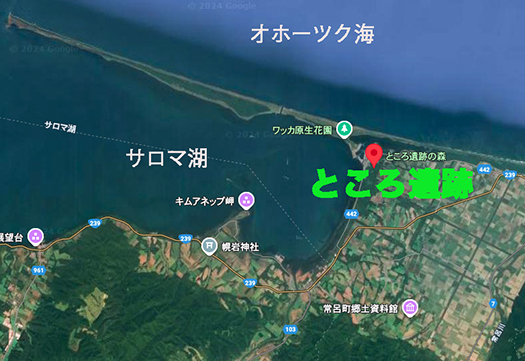






コメントを投稿
「※誹謗中傷や、悪意のある書き込み、営利目的などのコメントを防ぐために、投稿された全てのコメントは一時的に保留されますのでご了承ください。」
You must be logged in to post a comment.